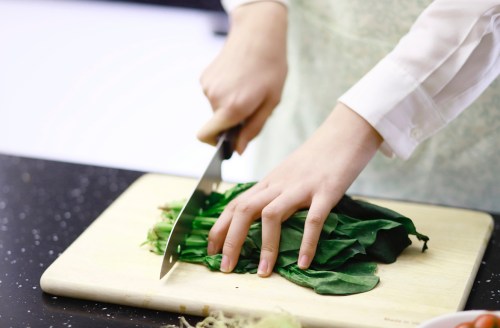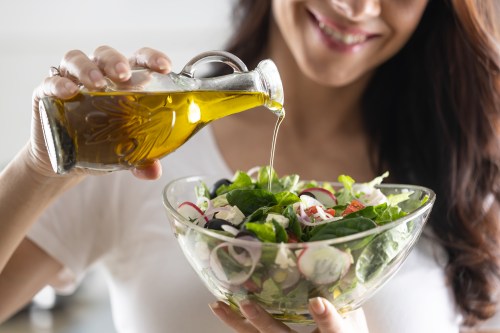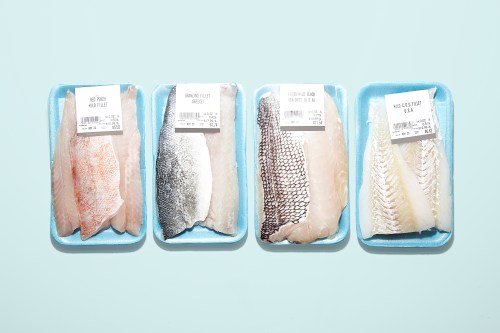When you’re shopping at the store, grabbing those heirloom carrots for soup or fresh broccoli for a stir-fry sounds like a great idea. But it’s all too easy to buy too much produce only to have things come up during the week that derail carefully-laid dinner plans—and we’re left with wasted money, leftover produce, and resentment.
Experts in This Article
registered dietitian based in Westchester County, New York
registered dietitian and recipe developer
Thankfully, you can turn those leftover pieces of produce into innovative, flavorful dishes as long as you know just what to do with them. And the surprising part is that a lot of these unused or usually-discarded parts are typically pretty nutritionally dense, so it’s a shame to pass up the opportunity to integrate them into a couple of meals during the week.
Next time you’re looking around in your kitchen at what’s left of your produce, resist the urge to toss and whip them up into meals in a variety of ways. Here are some ideas, courtesy of dietitians who never want to let some great vegetables go to waste!
1. Carrot greens
When you’re done with your carrots, don’t toss those greens in the trash. “Carrot greens are versatile, flavorful, and such a shame to waste, as they have a peppery flavor and can be used to garnish meats, fish, hummus, and sauces,” says Maggie Michalczyk, RD.
You can also use those leftover carrot greens to create different types of dips, like a carrot green pesto (substituting basil for carrot greens) or for a smoothie, along with some protein powder, nut butter, or other fruits and veggies, she suggests.
2. Leftover herbs
Flavorful, nutritious, and great for garnishing nearly anything, keep herbs on hand to use in a variety of ways. “When they start to wilt, instead of throwing them out or waiting for them to die completely, freeze them,” says Michalczyk. “Keeping an herb freezer stash is a great way to prevent from buying a new bunch every time you need some for a recipe,” she adds. (This ice cube tray method makes portioning out the herbs a cinch.)
3. Citrus peels
“Instead of tossing citrus peels, you dry them out and use them to flavor tea,” says Michalczyk. Scrape off as much as you can of the inside and let the peel dry out for a few days before adding to your tea for a more pronounced orange or lemon flavor. “And don’t forget that the zest of lemons, limes, and oranges, can be used in baked goods, pancakes, and on top of meats and fish for more flavor,” she adds.
4. Celery leaves
“Celery leaves can create a flavorful garnish for soups, stews, salads, and sauces—not to mention, the leaves are rich in magnesium, calcium, and vitamin C,” says Ilyse Schapiro, RD. To get started in the kitchen, chop the celery leaves from their stalk and incorporate them into any dish you’d like. (Soups, salads, stew, chili, and more.)
“To save for later, wrap them in a slightly damp kitchen towel and place the greens in an open container in your refrigerator,” she says. Then you can use them as you please in addition to the fresh celery you’re more familiar with.
5. Swiss chard stems
Swiss chard and their stems are packed with nutrients, notably vitamin K, vitamin C, and potassium, the latter being great for replenishing electrolytes post-workout.
“To repurpose these powerhouses, coat the stems with one to two teaspoons of olive oil and a sprinkle of salt. Then, bake on 375 F for 20-30 minutes until the stems are tender and start to brown,” says Schapiro. Think of it as a different kind of veggie chip. Parmesan cheese and black pepper are great seasonings to add, too. If you’re not using them right away, wash and store the stems in an airtight container in the refrigerator.
As for the Swiss chard leaves, try making these delicious vegan wraps:
6. Broccoli stalks
Broccoli stalks are rich sources of protein, calcium, and potassium, which can create a nutrient-packed broccoli soup or stew. “Compared to florets, broccoli stalks contain higher amounts of cancer-fighting phytochemicals, like beta-carotene and sulforaphane, or vitamin A compounds,” says Schapiro.
Use them in a warm soup for winter. “For a broccoli-puree soup, bring broccoli stalks and chicken or vegetable stock to a boil and cook partially until the stalks are tender,” she says. Then, with an immersion blender or in small batches in a blender, puree your soup and season to your liking.
7. Winter squash seeds
Winter squash seeds are loaded with fiber and protein, as well as iron, calcium, and magnesium. “For a healthy and delicious snack, save and wash the seeds from the squash, coat them with olive oil and salt, and then bake them on 375 F for 15-20 minutes until they start to pop,” says Schapiro.
Once they’re baked to perfection, remove them from the oven and gently shake the pan to loosen up the seeds. Allow your creation to cool before serving so the seeds can become crispy. Enjoy as-is or even use the cooked seeds in other recipes, like salads or grain bowls, for a crunchy and nutritious topper.
Have you checked out The Well+Good SHOP? Our editors sift through hundreds of products every week so that you don’t have to—and now, you can find their faves (from skin care to self care and beyond) in one carefully curated space. What’re you waiting for? Get shopping!
Sign Up for Our Daily Newsletter
Get all the latest in wellness, trends, food, fitness, beauty, and more delivered right to your inbox.
Got it, you've been added to our email list.











